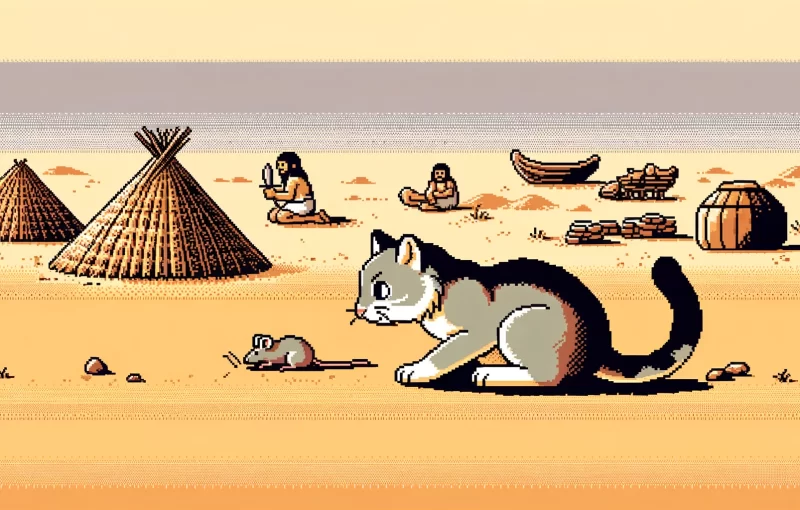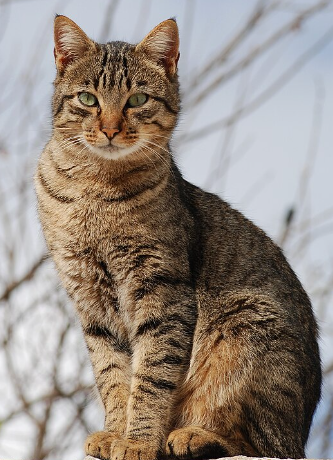
Unraveling the Origins of House Cats
by Jon Scaccia May 29, 2024The house cat is a beloved member of many families worldwide, with over 600 million sharing our homes. But how did these charming creatures become our companions, especially when they contribute little in the way of sustenance or labor? For a long time, researchers believed that domestication began with the ancient Egyptians. However, new genetic and archaeological evidence has shifted this timeline and origin story, revealing a fascinating connection between wildcats and early agricultural societies.
A New Timeline: From Wildcat to House Cat
Traditionally, it was thought that cats were first domesticated by the Egyptians around 3,600 years ago. However, recent discoveries indicate that domestication began much earlier and in a different location. Evidence points to the Fertile Crescent—a historic region covering parts of the Middle East and Asia—as the origin of our feline friends.
Around 10,000 years ago, as humans transitioned to agriculture and settled into permanent villages, these new environments brought new opportunities for wild animals willing to venture near. Wildcats, particularly those of the Felis silvestris lybica subspecies, ventured into human settlements drawn by an abundance of mice and other food scraps.
The Scientific Evidence: Tracing Feline DNA
To determine the genetic lineage of the house cat, researchers collected and analyzed the DNA of nearly 1,000 wild and domestic cats from across Europe, Asia, and Africa. Their genetic analyses showed that all domestic cats are descendants of F. s. lybica, also known as the Middle Eastern wildcat.
These findings reveal that domestication did not occur in multiple regions independently but in one central location where the wildcats had the right temperament to thrive alongside humans. Their adaptation to living in settlements paved the way for the development of the house cat we know today.
Early Partnerships and the Role of Mice
One of the earliest archaeological discoveries of the cat-human relationship is a 9,500-year-old grave on the Mediterranean island of Cyprus, where a cat was buried alongside a human. The presence of a cat burial on an island where they weren’t native suggests intentional human transport, possibly from the nearby Levantine coast.
The main factor behind the relationship was undoubtedly the burgeoning agricultural society and the abundance of food. Early grain stores and settlements attracted large populations of house mice, which, in turn, brought wildcats to feast on them. This mutual benefit laid the foundation for a long-standing partnership between cats and humans.
The Spread of the House Cat
As agriculture and trade expanded from the Fertile Crescent, so did the domesticated cat population. Evidence from ancient artwork, literature, and archaeological sites reveals how cats traveled across Europe, Asia, and Africa, gradually gaining a place in various cultures. Cats became popular for their utility in controlling rodents and their endearing companionship.
Modern Day Significance: Understanding Our Feline Friends
Today’s house cats haven’t strayed too far from their wild ancestors. Unlike dogs, which were bred for specific tasks like herding or guarding, cats maintained their hunting instincts and independence. Although selective breeding has created various distinct breeds, house cats remain genetically similar to their Middle Eastern wildcat cousins.
So are today’s house cats truly domesticated? Well, yes, certainly they are—but perhaps only just. Although they satisfy the criterion of tolerating people, most domestic cats are feral and do not rely on people to feed them or to find them mates.
– Driscoll, C. A., Clutton-Brock, J., Kitchener, A. C., & O’Brien, S. J. (2009). The Taming of the cat. Genetic and archaeological findings hint that wildcats became housecats earlier–and in a different place–than previously thought. Scientific American, 300(6), 68–75.

For modern pet owners, this research offers valuable insights into feline behavior. Understanding that cats are naturally inclined toward independent hunting can guide their care and environment. Cats need space to explore, stimulation to mimic hunting behaviors, and the opportunity to engage in their natural instincts. Providing these will enrich their lives and strengthen the cat-human bond.
Conclusion
The house cat’s journey from solitary wild hunter to beloved companion is a tale of adaptation, opportunity, and mutual benefit. From the ancient agricultural societies of the Fertile Crescent to today’s urban apartments, cats have found a way to fit seamlessly into our lives. As we continue to uncover more about their history, we’re reminded of the remarkable journey they’ve taken with us.
Leave a Reply